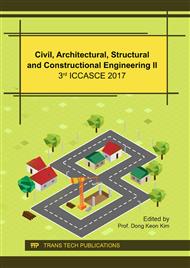p.110
p.115
p.121
p.126
p.135
p.140
p.146
p.152
p.159
Transformation of Dom-Ino Structures from the Architect’s Point of View
Abstract:
As the most widespread applied structure model since Modernism, Dom-ino Structure is rooted deeply in the sub-conscious of many architects, which in some sense constrains their ability to shape it. Transformation strategies for Dom-ino Structure try to change a hard, homogeneous and rigid model into a soft, flexible, and changeable form. By analyzing the inner property of Dom-ino Structure, this article firstly specifies the orientation of probable transformations. Then, after categorizing cases with integrated architectural form and structure, this article describes three ways of transforming of Dom-ino Structure, including material replacement, geomorphing and mechanics remodeling. These three ways are mutually dependent with a prolongable method system for the innovation of architectural and structural form. This research on the transformation of an existing structural model, presented from the architect’s point of view, is based on Morphological perspective. This research could facilitate the integration of architecture and structure, clarify the inner relations between different structural types, improve the weaknesses of existing structure model while expanding the diversity of architecture forms. It also gives a significant picture of how inspiring the process of collaboration between the architect and the engineer can be.
Info:
Periodical:
Pages:
135-139
Citation:
Online since:
February 2018
Authors:
Keywords:
Price:
Сopyright:
© 2018 Trans Tech Publications Ltd. All Rights Reserved
Share:
Citation:


